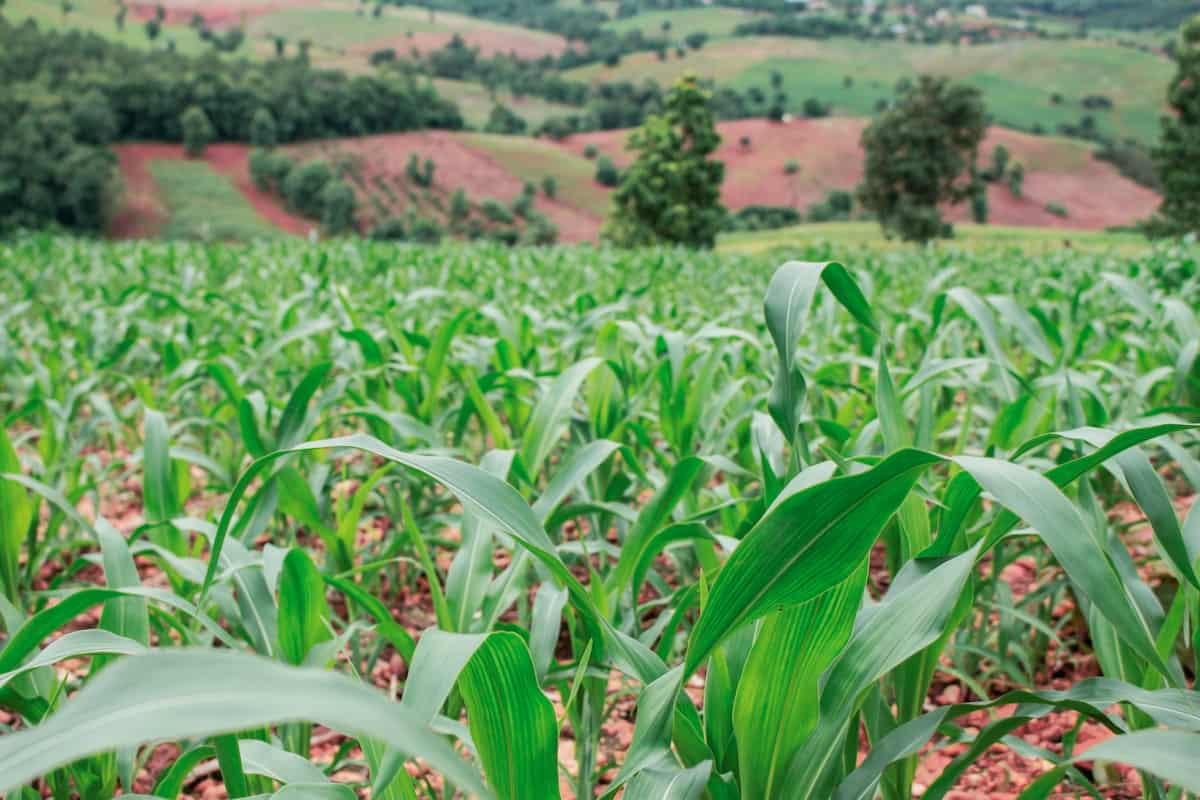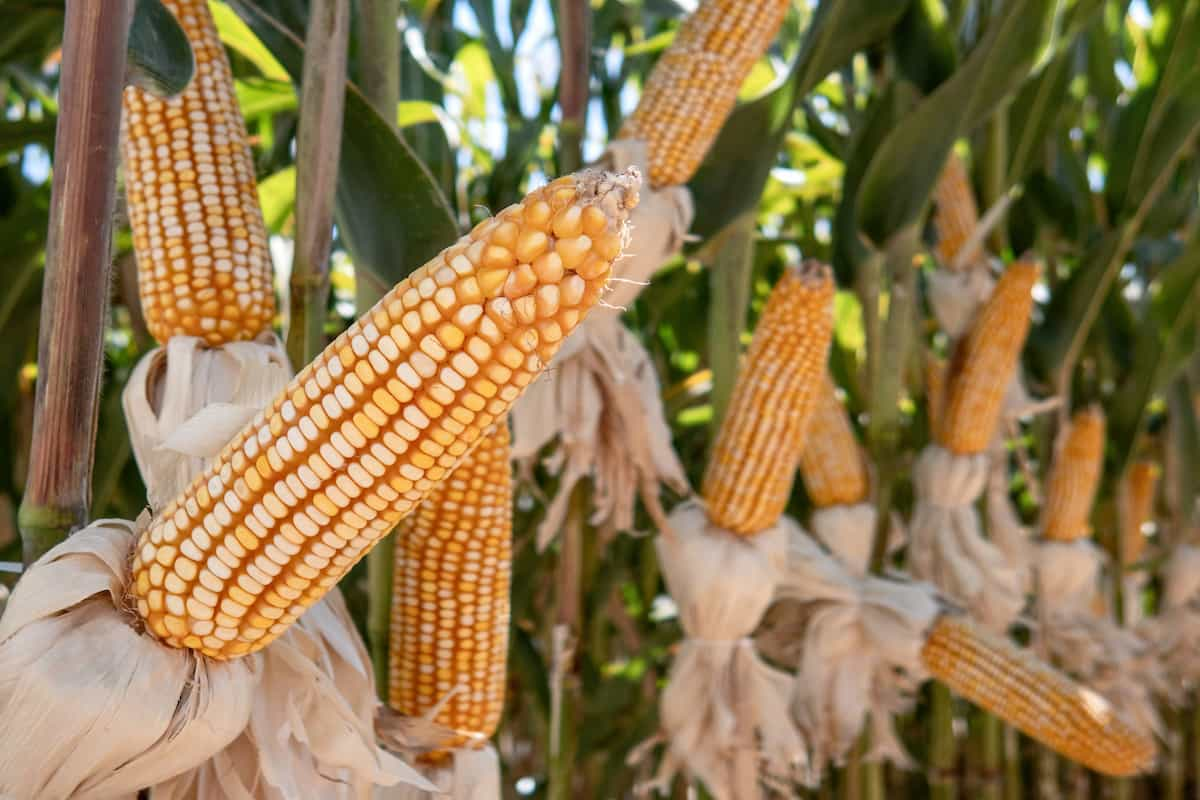Corn farming has long been a staple of Wisconsin’s agricultural landscape. With its fertile soil and ideal climate, the state provides an excellent environment for growing this versatile crop. This comprehensive guide will walk you through starting a successful corn farming operation in Wisconsin, from field preparation and selecting the right varieties to planting, managing, and harvesting your crop.

How to Start Corn Farming in Wisconsin
Field Preparation
The first step in starting your corn farming venture is preparing the field. Begin by testing your soil to determine its nutrient levels, pH, and organic matter content. This information will help you develop a tailored nutrient management plan to optimize corn yields. Lime may be needed to boost pH and nutrient availability if your soil test is below 6.0. Lime should be applied in the fall, allowing it to react with the soil before planting.
Tillage is essential for breaking up compacted soil, incorporating organic matter, and controlling weeds. In Wisconsin, conventional tillage practices involve a combination of chisel plowing, field cultivating, and disking. However, reduced-tillage or no-tillage practices can also be successful in certain situations and soil types. Proper field drainage is crucial for optimal corn growth. Assess your field for any drainage issues and address them as necessary by installing subsurface tile drains or constructing surface ditches.
Selecting the Right Varieties
Wisconsin’s diverse climate necessitates selecting corn varieties suited to the specific growing conditions in your area. When choosing a variety, consider the average growing degree days (GDDs), the risk of early frosts, disease resistance, yield potential, agronomic traits, and the intended end use for the corn.
Select varieties with appropriate maturity ratings for your region and choose those resistant to common diseases in Wisconsin, such as northern corn leaf blight, gray leaf spot, and Goss’s wilt. Evaluate each variety’s standability, root strength, and tolerance to drought and other environmental stressors.
Equipment Needed for Corn Farming in Wisconsin
The following equipment is essential for a successful corn farming operation in Wisconsin: a versatile tractor for tasks like tillage, planting, spraying, and harvest; a reliable planter for accurate seed placement and consistent plant spacing; a fertilizer applicator for applying nutrients to the soil; a sprayer for applying herbicides, insecticides, and fungicides; and a combine harvester for harvesting your corn crop. Additionally, you may need other equipment like grain carts, wagons, or trucks for transporting your harvest.
Seed Spacing and Planting
Proper seed spacing and planting are crucial for achieving high corn yields. Corn should generally be planted at a depth of 1.5 to 2 inches, with a row width of 30 inches. Optimal plant populations depend on the variety and the specific growing conditions, but a typical recommendation for Wisconsin is around 30,000 to 36,000 plants per acre.
When planting, ensure the seeds are evenly spaced within rows to minimize resource competition and maximize yield potential. Pay attention to soil temperature and moisture levels to determine the best time for planting, ideally when the soil temperature reaches 50°F at a 2-inch depth.
Wisconsin Climate for Corn Farming
Wisconsin’s climate is well-suited for corn farming, characterized by cold winters and warm summers. The state typically experiences a growing season of around 120 to 150 days, depending on the location. Corn requires ample sunlight and warm temperatures for optimal growth, with the ideal temperature range for corn development being between 77°F and 86°F.
In case you missed it: How to Start Corn Farming in North Carolina: A Step-By-Step Production Guide for Planting to Harvest

Adequate rainfall is also crucial, with corn typically needing around 20 to 25 inches of water during the growing season. In Wisconsin, precipitation is generally well-distributed throughout the year, with most areas receiving adequate rainfall for corn production. However, irrigation may be necessary in drier years or areas with lower rainfall to ensure optimal growth and yields.
Crop Management
Effective crop management is essential for a successful corn farming operation. This includes weed control, pest and disease management, and proper nutrient management. For weed control, utilize cultural, mechanical, and chemical methods, such as tillage, crop rotation, and herbicide application.
Scouting your fields regularly for pests and diseases will help you detect issues early and implement appropriate management strategies. Employ integrated pest management (IPM) techniques, including resistant varieties, biological control, and targeted pesticide applications. Management of nutrients is another important part of growing corn. Create a plan for managing nutrients based on the results of your soil test.
This plan will make sure that nitrogen, phosphorus, potassium, and other important nutrients are applied in the right amounts. Use a mix of organic and artificial fertilisers to give your plants the nutrients they need, and think about using precise agriculture technologies to figure out the best rates and times to apply fertilisers.
Irrigation Management
Keep an eye on how wet the soil is during the growing season and water it more if it needs it, especially during important growth stages like pollination and grain fill. Use efficient irrigation methods, such as drip or center pivot systems, to conserve water and apply it uniformly across the field.
Monitoring Crop Growth
Regularly scout your fields to assess crop growth, detect issues early, and make informed decisions about crop management. Pay attention to plant color, height, and overall appearance, as well as signs of nutrient deficiencies, pest damage, or disease symptoms.
Harvesting
The timing of corn harvest is crucial for maximizing yield and quality. Monitor your corn’s moisture content to determine the optimal time for harvest. For grain production, aim to harvest when the moisture content is between 20% and 25%, as this minimizes field losses and facilitates efficient drying and storage. For silage production, target a moisture content of 65% to 70%, promoting proper fermentation and reducing the risk of spoilage.
In case you missed it: How to Start Corn Farming in Illinois: A Step-by-Step Maize Production Guide for Planting to Harvest

To harvest your corn, use a combine harvester equipped with a corn head attachment, which will separate the ears from the stalks and shell the kernels from the cobs. Harvesting equipment should be well-maintained and adjusted for optimal performance to minimize losses and ensure a clean, high-quality harvest. After harvesting, dry and store your corn properly to maintain quality and minimize spoilage risks.
Conclusion
Starting a corn farming operation in Wisconsin can be rewarding and profitable, thanks to the state’s favorable climate and fertile soil. By following this step-by-step production guide, you will be well-equipped to establish a successful corn farm from field preparation to harvest. Careful planning, diligent management, and attention to detail will help you optimize your corn yields and ensure a prosperous farming operation for years.
- Feed Your Flock for Less: Top 10 Tips to Save on Chicken Feed
- Ultimate Guide to Ossabaw Island Hog: Breeding, Raising, Diet, and Care
- Hatching Answers: The Top 10 Reasons Your Chickens Aren’t Laying Eggs
- Eggs and Economics: Breaking Down the Cost of Raising Backyard Chickens
- Defend Your Greens: Proven Methods to Keep Iguanas Out of Your Garden
- Ultimate Guide to Cinnamon Queen Chicken: A Comprehensive Guide for Beginners
- Ultimate Guide to California Tan Chicken: Breeding, Raising, Diet, Egg-Production and Care
- Ultimate Guide to Marsh Daisy Chicken: Breeding, Raising, Diet, and Care
- 10 Types of Chicken Farming Businesses You Can Start for Profits